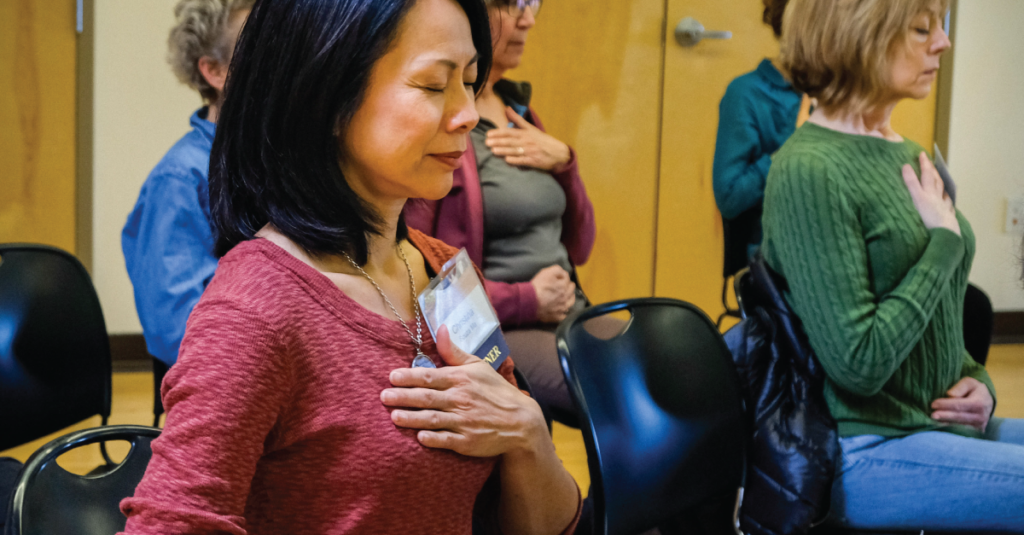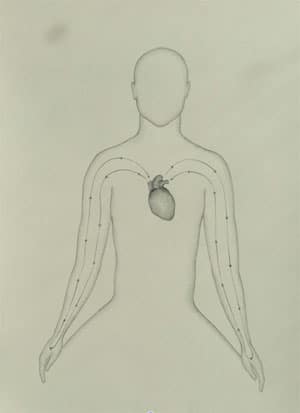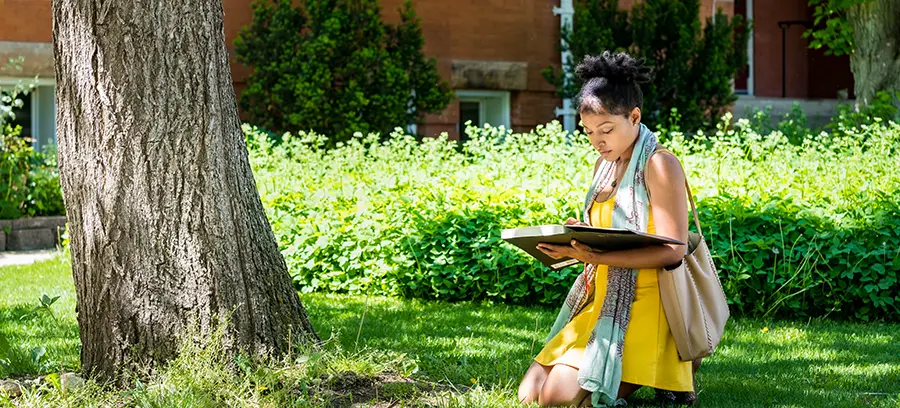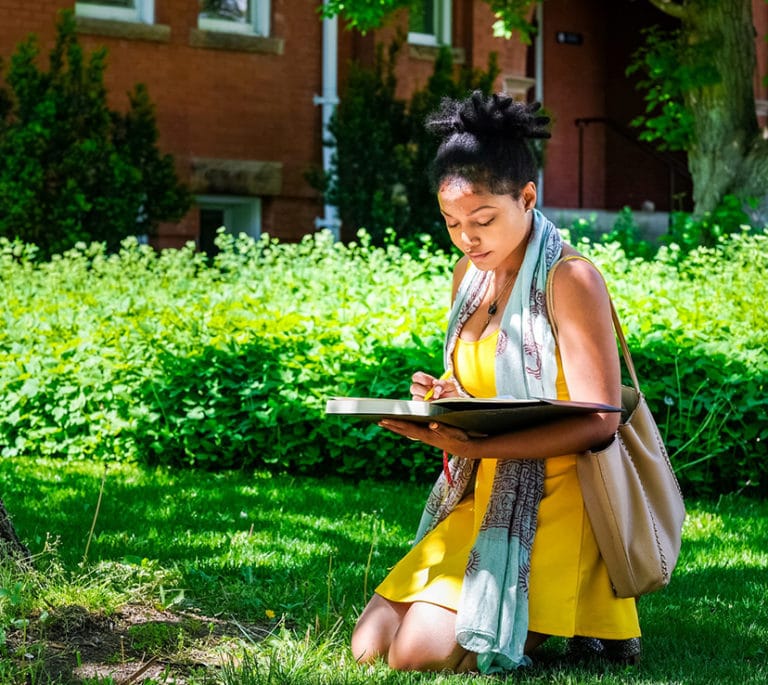The Heart: A Meditation
 By Erika Berland, founding faculty and co-creator of the unique movement curriculum of the MFA Theater: Contemporary Performance Program at Naropa University
By Erika Berland, founding faculty and co-creator of the unique movement curriculum of the MFA Theater: Contemporary Performance Program at Naropa University
In Eastern thought and medicine, the heart is generally considered the seat of consciousness and awareness, while the West tends to locate consciousness primarily in the brain. Regardless of cultural orientation, for most human beings the heart holds a wealth of imagery as reflected in the language and symbols that we associate with it. We are “heart-sick,” we have “loss of heart,” we are “heartened,” or our experience is “heartfelt.” Feelings of compassion and love, or the lack of compassion and love, are all expressions of the heart. When we “feel our hearts,” there is the sense that we are touching into our truth and our “heart’s desire.” When we put our hands on our heart, we touch our human goodness, vulnerability, and a deep desire for happiness. When we “give our heart” to others or when we are genuinely “openhearted,” we extend those same feelings we have for ourselves to others.
The anatomical heart has its own blood supply, nerves, and glandular tissue and it beats tirelessly throughout our lives, very rarely missing a beat. The main aorta that carries freshly oxygenated blood to the whole body arches upward out of the heart toward the clavicle at the base of the neck. Like a fountain, the blood is muscularly pushed out of the heart into the aorta and carried through the rest of the body via the arteries and the even smaller arterioles. This sense of uplift, vitality, and fluid power can be felt to support the gentle suspension of the front of the chest venules and veins that eventually empty into the vena cava and the heart. The movement of the blood back to the heart gives us a sense of self-nurturance and a return to “home base.” Energetically, the hands and wrists are connected to the heart. It is through our hands and arms that we can reach out to others–it is our hands that pull others toward us and allow us to embrace them closely, heart to heart. Our hands are the physical expression of what our hearts want to say. When we sit in the meditation posture we can feel a triangle of energetic support from the palms of our hands to our heart.
Heart and Hands
 Intention:
Intention:
- To feel the connection and flow between the heart and the hands in the meditation posture.
- Sit with your hands on your thighs and bring attention to the feeling of your palms touching your thighs.
- As you release the muscles and bones of your hands into the supporting surface of the thighs, feel an energetic uplift from your thighs into your hands.[i] Then gently press your hands toward your thighs and allow that feeling to flow up your arms to and into your heart. Feel a triangle of support between your hands and your heart.
- If you have a habit of slumping or collapsing your chest, use this visualization to provide a sense of ease and openness across your chest, releasing overworked neck and shoulder muscles.
- If you have the opposite pattern; lifting and thrusting your chest forward and up by pushing your heart against the breastbone, try releasing the weight of your heart into your hands and then exert slight pressure with your hands into your thighs. Feel the flow of energy from your palms to your heart.
Sensory Focus:
- Feel the contrast between energizing your hands to help support your heart or letting your hands play more of a passive role. Notice how these different intentions affect your body-mind and posture.
- Bring sensory awareness to the feeling of movement and flow from hand to heart, to opposite hand and then back toward the heart. Feel the qualities of upliftedness, vitality, and fluid power as your hands gently support the suspension of the front of the chest and sternum.
Contemplation:
Our hands support our hearts and our hearts support our hands. As you go through your day, notice if your heart is behind your handshake or touch as you interact with others. Notice also if what and who you touch is brought back into your heart as feeling and connection.
If you find yourself feeling especially tight, spaced out or dis-connected when you begin a meditation session, it can be helpful to spend a few minutes simply breathing into your heart.[ii] Your breath is like a “flashlight of awareness,” illuminating what is held in your heart and reconnecting you to the tenderness of your feelings.
Breathe into the Heart
Intention:
To feel how the heart helps supports the chest and ribcage and to awaken the heart’s natural vulnerability, gentleness, and compassion.
- To locate the general area of your heart, make a soft fist with your hand and place the top of your fist just below the level of your collarbone, slightly to the left of your breastbone. Your hand is considered roughly the size of your own heart, so the top of your fist will correspond to the top of your heart while your wrist will relate to the bottom of your heart.
- Once you have located this area, if it is comfortable, place your hand on your heart and tune into your breathing.
- As you breathe, feel the movement of your lungs as they expand and release around your heart. With each breath go deeper, until your awareness rests in the subtle movement of the heart itself.
- Now visualize your breath moving into the four chambers of the heart. As you fill each “room” with breath, feel as if windows open in each chamber and let in fresh air, re-vitalizing and clearing away any stagnation.
- If you practice this for any length of time, you can begin to let the focus on your external breath begin to fade. You will become more aware of the liveliness of the heart tissue itself. The billions of cells that make up your heart are breathing, communicating with each other through their semipermeable membranes. This level of cellular awareness can bring a deep sense of relaxation and recuperation.
Sensory Focus:
- Connect to the sense of uplift, vitality, and fluid power of the heart that can be felt to support the gentle suspension of the front of the chest and sternum.
- If you have a pattern of lifting and thrusting your chest forward and pushing your heart against the breastbone, try bringing awareness to the back of your heart. Awareness of the back surface of the heart softens the chest and brings a sense of rest and contentment.
- Allow feelings, emotion or stories that arise out of your heart to simply be. If you stay with the circulation of the breathing, the feelings and emotions that bubble up will rise and then dissolve naturally.
Contemplation:
When we feel emotionally disconnected or unsynchronized, feeling our hearts can remind us to connect to how we actually feel. Take a moment to lightly breathe into your heart as you go about your day, noticing if you feel more synchronized with your feelings and emotions.
Erika Berland is the author of The Physical Art of Sitting, a guide to the ancient form of sitting meditation practice utilizing contemporary research in somatic education and experiential Anatomy. You can purchase the book here.





